Pruning plums in spring, summer and autumn
Pruning is an important garden manipulation that is aimed at shaping and thinning the crown. It is especially important to prune heavily branching trees such as plums: without proper care, the crown becomes very dense, as a result of which the tree is often sick and practically does not bear fruit.
What do you need to know about pruning plums?
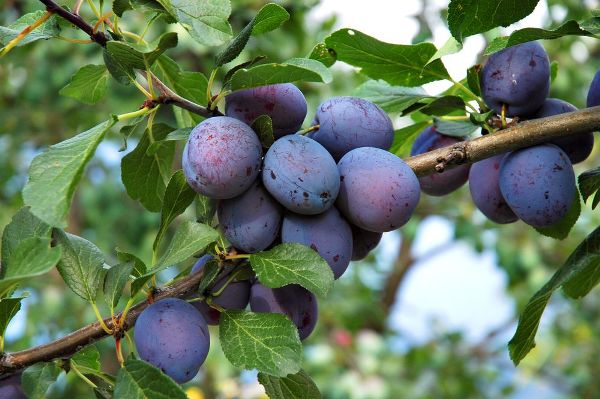
Content
- 1 When is the best time to prune plums - in spring, summer or fall
- 2 When to prune in spring, summer and autumn: what month, timing.
- 3 General rules and tips for properly pruning plums
- 4 Step-by-step instructions, diagram and features of pruning plums
- 5 Leaving after spring pruning
- 6 Popular mistakes when carrying out the pruning procedure in the spring
When is the best time to prune plums - in spring, summer or fall
When planning a pruning, first of all, what needs to be done is to determine the timing of the manipulation. In the spring, it is preferable to cut the plum for the following factors:
- The wounds are practically not infected and heal quickly.
- A large increase grows from species.
- During the warm season, the branches grow stronger, and the next spring the tree begins to bloom profusely.
- After the manipulation carried out at this time, large high quality fruits are tied on the tree.
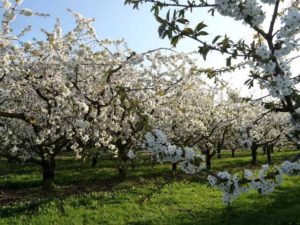
The only drawback of spring pruning is that there is a chance that you may not have time to do it before the beginning of the growing season. As a result of late manipulation, the tree may get sick.
Many will be surprised, but trees can be cut in summer too. Pruning plums in summer during the growing season has the following advantages:
- From a tree covered with leaves, it is easy to determine whether its crown is thickened or not.
- By cutting off diseased branches in time, it is possible to prevent the spread of pathogenic microorganisms to other inhabitants of the garden.
However, in the summer, formative and rejuvenating pruning should not be carried out.
Video: summer pruning plum
Autumn is the best time to prune most fruit trees, but this manipulation has its own nuances. It is advisable to cut plums in autumn before winter for the following reasons:
- After pruning, the crown withstands snow pressure better and does not break. Due to its high density, an unkempt tree suffers greatly from numerous damage.
- Thanks to pruning, all nutrients are directed to the skeletal branches, and the plant tolerates cold better.
Since pruning takes a lot of energy from a plum tree, it can only be done in autumn in regions with warm winters. Otherwise, the plum may not withstand prolonged cold weather and will die.
In the middle lane (Moscow region), and even more so in the northern part of Russia (in the Urals and Siberia), it is best to cut the plum before the beginning of the growing season, since during the warm season the tree will fully recover and safely endure the winter even under the most unfavorable weather conditions.
When to prune in spring, summer and autumn: what month, timing.
Spring pruning of plums is best done 3-4 weeks before the start of sap flow. Depending on the weather conditions, the optimal time for pruning in the fall comes in April, when the temperature is stable at + 10 C. It is best to carry out garden manipulation in dry, quiet weather. You should not cut the plum on the eve of rain or in between.
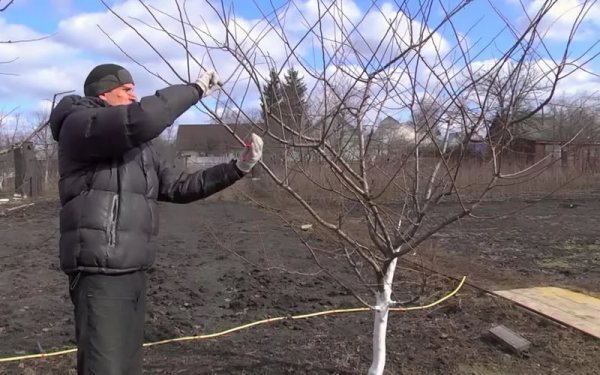
In the first half of summer, only sanitary pruning is carried out and, if necessary, tops and root shoots are removed. Summer pruning of plums is recommended if spring pruning has not been done, or the crown is heavily overgrown.
On a plum cut during the growing season, fewer spinning shoots are formed, since regeneration is weak at this time. As a result of the correct manipulation, nutrients are directed not to the maintenance of useless branches, but to the formation of fruits.
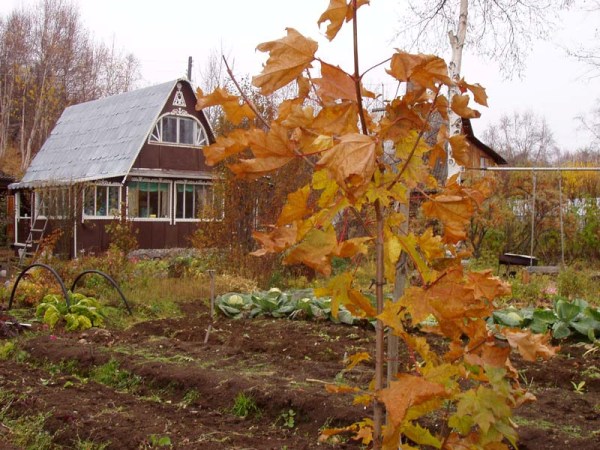
In autumn, the plum is cut a month before the onset of cold weather. In regions with a temperate climate, manipulation is carried out in mid-September.
Important! You need to start spring pruning with adult and old plums, since the flower buds of such trees wake up much earlier than young ones.
General rules and tips for properly pruning plums
Pruning plums, like any garden manipulation, has its own nuances. In order for the procedure to be successful, the following points should be taken into account during work:
- The scale of pruning depends on which variety the fruit tree belongs to. So the least need for garden manipulation is plums of weak and medium branching varieties. The only thing that is needed is to form the crown and shorten the branches.
- Strongly branching trees are regularly thinned out, removing a large number of shoots. If you neglect pruning, such a tree will bear fruit abundantly for the first few years, and then the crown will thicken strongly, and the fruits will form only on the periphery.
- Slices should be carried out over the kidney pointing outward at a distance of 0.5 cm. If the incision is made closer, the kidney will die, further - the upper part of the process will dry out. Also, you should not make too oblique cuts, since after them the wood cracks.
- When shaping the crown of a young tree, leave 5-6 strong branches at least 20 cm apart. Ideally, the skeletal branches should be tilted at an angle of 50 degrees.Such sparse-tiered crowns are well lit and ventilated, as a result of which the risk of infection by pathogenic microorganisms is reduced, and the yield, on the contrary, increases.
Important! After the end of pruning, all sawn branches must be removed from the site and burned. Pathogens and pests will be destroyed along with wood.
Step-by-step instructions, diagram and features of pruning plums
Rejuvenating and formative pruning in the Middle Lane is carried out in the spring, and sanitary pruning - at any time. In the summer, sanitary pruning and thinning are carried out, during which all diseased shoots and shoots that thicken the crown are removed.
In order to improve the illumination and air permeability of the plum crown, sanitary pruning. The operation is carried out according to the following scheme:
- All broken, deformed branches are removed, as well as branches directed towards the inside of the crown.
- Cut off excess branches that thicken the crown.
- The gains that have grown in the past year are shortened. Thanks to this action, next year, young bearing branches will grow on them.
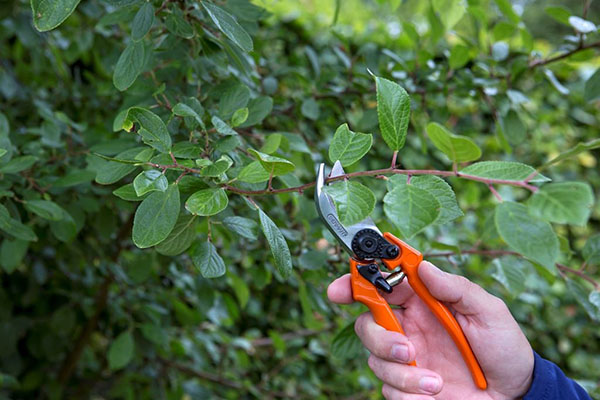
The purpose of summer pruning is to redirect nutrients from unnecessary and sick branches to the branches on which fruits are formed. During the manipulation, diseased and deformed branches are removed, as well as green vertical tops and root shoots formed on the trunk.
Spring and autumn crown of plumform in the following way:
- In a young tree, the apical part is shortened by a third of the length. A tree cut in this way grows upward more slowly.
- Fast growing branches are pruned by 2/3.
- Dried, diseased and damaged branches are cut off.
- For the purpose of thinning, excess branches are cut from the crown.
Worth knowing! You can prune broken, withered and diseased branches whenever you need to.
Anti-aging pruning of old wood
As soon as the tree stops growing, they begin anti-aging pruning, during which some of the old branches are cut down. Young branches cannot be cut during rejuvenating pruning. To make the cut even, branches of a large diameter are cut from both sides. In addition, this method of cutting will prevent them from breaking, which will save the tree from poorly healing wounds.
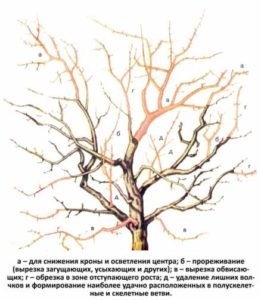
Of the shoots that have formed in the places of the cut, only 2-3 of the strongest are selected, and the rest are removed. All damaged, dry and diseased branches are also subject to removal.
This pruning is carried out until the tree reaches a height of 2.5 m.This usually occurs at the age of 15-20 years. After the appearance of such signs, the conductor is shortened, and the strongest side branch is cut off. As a result of such manipulation, the plum stops growing, and the only thing that remains for the gardener is to monitor the condition of the crown and, if necessary, cut off excess shoots.
If the pruning has been done correctly, the old plum will bear fruit for several more years.
Video: rejuvenating pruning of old plum - results
Important! Anti-aging pruning cannot be done in one go. In order for the old tree to recover after large-scale manipulation, it is stretched for 3-4 years. And in one approach, it is recommended to cut down only a few branches, the diameter of which is 5 cm.
Pruning a young tree
Among summer residents, there is an opinion that it is necessary to cut the plum 2-3 years after planting. However, this statement is absolutely wrong, because in order to form the correct crown, the seedling must be cut from the age of one.
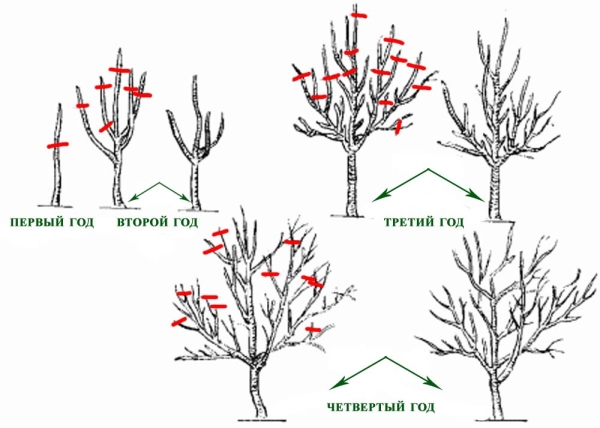
The pruning scheme for young plum seedlings looks like this:
- 1st year. Having decided on the height of the planted tree, the stem is shortened in such a way as to form a medium-sized plum in the future, and for this, a part of the stem 1-1.2 m long is left.
- 2nd year. At this time, the grower should mark the skeletal branches. For this purpose, of all the growths, the strongest are chosen and cut them to a length of 25-30 cm. Pay attention that the branch grows to the side, the cut must be made on the lower bud.
- 3rd year. During active branching, all lateral growths are shortened to a length of 15 cm from the trunk, and the apical ones - 30 cm. In order for all branches to grow outward, all cuts are made on the lower bud. Thanks to such pruning, each branch will receive more sunlight, as a result of which its fertility will increase. The shoot competing with the guide, which occasionally forms a plum, must be cut out.
In subsequent years, sanitary and regulatory pruning is carried out, during which dried, diseased or broken branches, as well as excess branches and vertical tops, are removed from the crown.
Video: pruning young plums - crown formation
Leaving after spring pruning
Wounds after pruning will heal faster if you use special garden tools for manipulation. Contrary to the common misconception, it is impossible to cut trees with an ordinary construction saw, as it leaves behind severe wounds. A sharp pruner, a garden knife and a garden saw can be used as tools.
Tools that cut diseased branches are wiped with alcohol or any fungicide before the next use, and then wiped dry with a clean cloth.
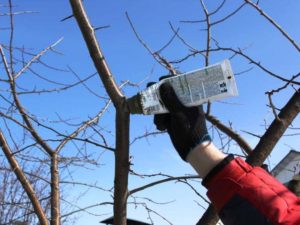
But, even after meeting all the requirements, large wounds need to be treated. To prevent infection and gum flow, wounds with a diameter of more than 2 cm are treated with garden varnish. In addition to the above functions, the substance will protect the wood from rotting and drying out.
Instead of garden varnish, you can use oil paint or sorrel gruel.
Popular mistakes when carrying out the pruning procedure in the spring
Novice gardeners, due to lack of experience during pruning, often harm the fruit tree. Here are some of their mistakes:
- Rejuvenating pruning of old wood is carried out in one go.
- When pruning a young tree, a cut is made on the upper bud.
- In regions with harsh long winters, the plum is cut in the fall.
- Because of pity for the plant, many unnecessary branches are left in the crown.
Having spent a little time on pruning, the gardener will not only improve the yield of his favorite tree, but also ennoble the site, since a compact tree looks much neater than an unkempt tree.
Video: how to fix an incorrectly cut plum branch


Very informative and detailed! Thank you very much!